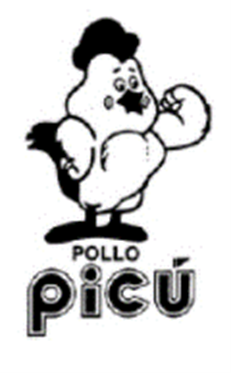The US Court of Appeals for the First Circuit affirmed a district court’s summary judgment decision finding that the prior owner of a trademark for fresh chicken had abandoned the mark by failing to use it for three years and failing to show an intent to resume use of the mark. To-Ricos, Ltd. v. Productos Avícolas Del Sur, Inc., Case No. 22-1853 (1st Cir. Sept. 19, 2024) (Montecalvo, Lipez, Thompson, JJ.)
PAS, a Puerto Rico corporation, sold Pollo Picú branded chicken from 2005 to 2011. The Picú trademark consists of a cartoon chicken with the phrase “Pollo Picú” underneath it:

While Pollo Picú was once a well-recognized brand in Puerto Rico, PAS encountered administrative and financial challenges. In 2006 and 2009, it failed to file declarations with the US Patent & Trademark Office (PTO) attesting to the use of the mark as required by Section 8 of the Lanham Act. The PTO therefore canceled the Picú trademark registration. PAS stopped selling chicken bearing the mark after its bank froze PAS’s financing in 2011. The bank filed suit in January 2012 under a preexisting loan agreement in which PAS had granted the bank a lien over PAS’s assets, including the Picú mark. PAS offered to sell the company to To-Ricos, PAS’s main competitor, but no sale occurred.
In October 2014, PAS and the bank signed a settlement agreement requiring PAS to pay a stipulated sum by December 2014 or the bank would foreclose on most of PAS’s assets, but not the Picú mark. The agreement provided that the bank would retain its lien over the mark until the foreclosure proceedings concluded. PAS failed to make the payment, but the bank did not exercise its foreclosure rights. In June 2017, PAS moved for the Commonwealth Court to order the bank to foreclose on PAS’s assets or declare PAS free of its obligations to the bank. The Commonwealth Court granted the motion in November 2019.
In April 2016, To-Ricos applied to register the Picú mark with the PTO. Three months later, PAS applied to re-register the same mark and filed an opposition to To-Ricos’s application. A year later, PAS licensed the right to use the Picú mark in the United States to IMEX. IMEX sold chicken under the mark for a few months but stopped after To-Ricos sent cease and desist letters.
In June 2019, To-Ricos began selling Picú branded chicken. It also filed a lawsuit against PAS, seeking a declaratory judgment establishing To-Ricos as the legal owner of the Picú mark. To-Ricos moved for summary judgment, arguing that PAS had abandoned its mark. PAS opposed. The district court agreed with To-Ricos, noting that PAS admitted to not having used the mark in commerce for at least three consecutive years prior to To-Ricos’s application, and that PAS had not demonstrated its intent to resume use of the mark within that period. PAS appealed.
PAS challenged the district court’s abandonment finding on two grounds. PAS argued that its nonuse of the mark “should have been excused and justified” because of the long-running entanglement with the bank that was beyond PAS’s control. PAS argued that such excusable nonuse prevents the challenger from establishing a prima facie case of abandonment. The First Circuit rejected this argument, finding that the statute “does not distinguish between inexcusable and excusable years of nonuse.”
PAS also argued, in the alternative, that it rebutted the presumption of abandonment by producing evidence of its “excusable nonuse.” The First Circuit rejected this argument as well, pointing out that once a prima facie case of abandonment has been established, the prior owner must provide evidence of an intent to resume use, not just a reason for why it did not use the mark.
PAS pointed to three incidents of intent to resume:
- Its attempted sale of the mark in 2012.
- Its exclusion of the mark from foreclosable assets with the bank.
- The “naked licensing” agreement with IMEX.
The First Circuit, however, found that none of these events showed evidence of intent to reuse the mark within the statutory period. The First Circuit therefore affirmed the district court’s finding that the mark had been abandoned as of April 2016.
Practice Note: To establish prima facie abandonment under the Lanham Act, the relevant factor is whether the mark has been out of use for three consecutive years, and the reason for such nonuse is irrelevant. As the Court noted, “[t]he statute is agnostic about the reason for a mark’s hibernation.” Otherwise, a mark owner could stop using a mark indefinitely as long as it could provide some excuse for the nonuse.





